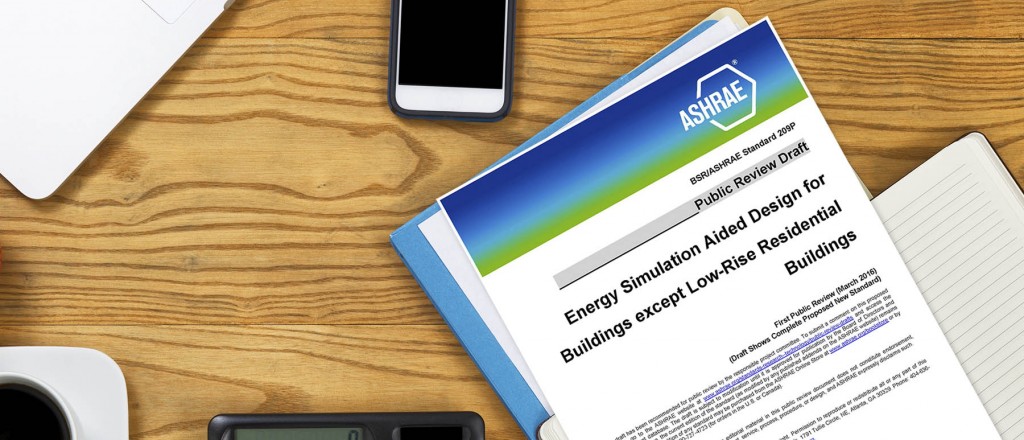ASHRAE is nearing the final stages of publishing its own energy modeling standard.
Energy efficiency and sustainability are playing an increasing role in design decisions. As such, defining a minimum standard of care for energy simulation is becoming crucial. The ASHRAE standard – open for public comment until May 9, 2016 – is the result of four years of internal discussions and considerations from a committee made up of energy analysts, energy software developers, researchers and government entities from across North America – including Glumac’s Ross Farris, P.E. With the goal of creating a standard for integrating energy modeling into the design process for high performance buildings, the goal is to provide a consistent approach for building energy modeling across the industry.
“The hope is that this standard will provide a framework that identifies a minimum level of energy analysis for new construction and major renovation projects. The ultimate goal is to aid the design process and enable design team members to make informed decisions,” Farris says. “It’s not a document that dictates how to create an energy model, but rather how to provide benefit to the design process through energy modeling. We believe this new ASHRAE standard will benefit cities, counties, states, building rating systems, and other agencies that might adopt the standard as a requirement within their programs for building design and construction. Our committee has worked diligently over the last four years to create this document, and we look forward to now being able to obtain comments from the public for incorporation into the standard.”
The standard is designed to apply to all new buildings or major renovations of existing buildings that use energy modeling in the design process. Once approved, this could drive greater levels of sustainability in the built environment. Requirements highlighted in the new standard include: at least two cycles of energy modeling during the design process, one being completed in the early stages of design when the energy impacts of design decisions can greatly impact energy use and HVAC system sizing. Modeling cycles have been defined to bring benefit at all stages of the design process. Additionally, owners would be required to integrate energy performance goals directly into their project requirements.
The standard is intended to get a project team thinking about the energy impacts of their design from the beginning of the design process in order to make informed decisions which will ideally create a more energy-efficient building design.
This is an inclusive process, and we encourage all who read this to take a look at the standard and provide comments.
If you have further questions about this process or energy modeling in general, please contact Ross Farris at [email protected].

